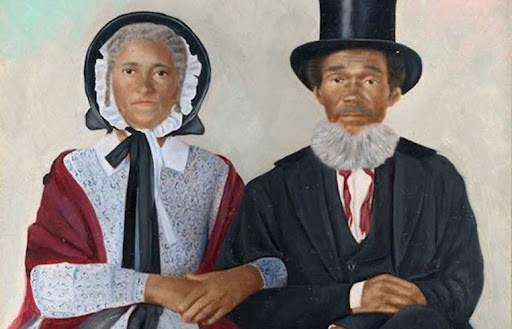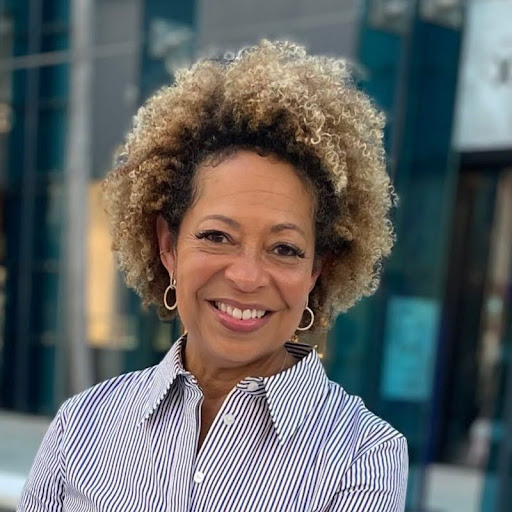
By Bria Overs, Word In Black
Black labor built America. It’s a well-known and personal fact for Deryl McKissack, whose family legacy reflects the craft and skill.
Her ancestor, an enslaved Black man in the 1790s, was a master in brick-making, she says. He gained his freedom after the Civil War and passed down knowledge to his sons, and this wisdom made its way to McKissack.

McKissack, president and CEO of McKissack & McKissack, is an influential figure in architecture, engineering, and construction (AEC). She started the firm in 1990 with just $1,000. Today, it has 170 employees and offices in several major cities.
Under her leadership, McKissack & McKissack has worked on significant projects, including the Museum of African-American History and Culture, the Martin Luther King, Jr. Memorial, and restoration work on the Lincoln Memorial and Thomas Jefferson Memorial in Washington, D.C.
“Because of my family legacy, seeing my ancestors and what they have done in this industry, it’s built my confidence even more,” she says.
With the passing of the Infrastructure Investment and Jobs Act in 2021, Black Americans have another opportunity to build up the country — but this time, it’s on their terms.
Over the next 10 years, $550 billion will fund the revitalization of roads, bridges, and water infrastructure, along with the expansion of electric vehicle infrastructure and broadband internet. These projects will create an estimated 20 million jobs over the next decade, mainly in the architecture, engineering, and construction industries. However, there’s a glaring concern for one aspect of this bill: diversity, equity, and inclusion.
Black workers hold less than 1 million positions in the construction industry and even fewer in architecture and engineering, according to the Bureau of Labor Statistics. Black leaders and allies believe in helping Black people take advantage of the significant investment in these lines of work.
“We make life possible for all Americans, so we need to hear from all Americans,” McKissack says. “Our industry has not always reflected the diversity of our society that we serve.”
McKissack founded AEC Unites, a nonprofit membership organization, to bridge the gap.
“After the events of George Floyd, I was really concerned about the nooses on job sites,” she adds. “I had to ask myself if I was doing enough to make a difference, and I started thinking about how I could make our industry more equitable and inclusive. It was time for me to speak up for the voices that traditionally had not been heard.”
Through partnerships with Historically Black Colleges and Universities, national associations, and companies, the organization will develop a pipeline for Black Americans interested in careers around infrastructure. They will offer mentorship, training, professional development, and coaching while creating sustainable and “intentional opportunities for Black talent and Black-owned businesses in all facets of the industry,” says Tia Perry, executive director of AEC Unites.
“Simply put, AEC Unites will work to level the playing field, build capacity, and provide equitable resources for Black-owned architecture and construction firms to win work and rise on their own merit,” she says.
Getting Black People in the Door
The organization has 12 founding members pledging to promote racial equity for Black communities. Pledgers promise to eliminate racist policies and practices and help close the gender and racial wealth gaps. But, they also commit to hiring, training, retaining, and promoting Black workers at all levels and working with Black-owned firms whenever possible.
“If a company only recruited 7% of Black people, push it up to 20%,” says Peter Davoren, AEC Unites’ co-chair and secretary.
McKissick and Davoren are committed to training workers of the future. They both serve on the board of the ACE Mentor Program, which supports high school students interested in the industry. The organization works with 10,000 students each year, adding up to 200,000 students since 1994, Davoren says.
The pledge is just the beginning. Perry says AEC Unites’ talent and business committees are creating a scorecard to evaluate the success of members’ efforts in providing resources to Black-owned businesses and workforce development.
“Accountability is key, and not only for the firms that are joining but our clients,” McKissick says. “Our clients need a report card on what they’re doing with Black and sustainable businesses.”
Support from the White House
America cannot achieve a complete rebirth of the country’s infrastructure without Black people. Before signing the bill into law, President Joe Biden named Mitch Landrieu senior advisor and infrastructure coordinator to oversee the planning of the infrastructure law. Prior to this role, Landrieu was the mayor of New Orleans from 2010 to 2018 and helped the city continue its recovery after Hurricane Katrina.
“Diversity is a strength, not a weakness,” Landrieu says. “In an effort to unite the country, in order to restore the soul of the country, we have to have a project to work on together, and that project is going to be to rebuild America.”
So far, investors have put billions into various projects, including $614 billion in private investments, $302.4 billion in public infrastructure and clean energy investments, and $66.3 billion toward affordable, high-speed internet. Landrieu says these projects have happened in 99% of counties across America, touching nearly every neighborhood.
“We’re trying to build generational wealth,” Landrieu says. “We’re trying to make sure people have access to opportunities they have not had before.”
Additionally, through the Reconnecting Communities and Neighborhoods Grant Program, $1 billion is dedicated to undoing the disenfranchisement of Black neighborhoods with highways built through them. Until 2028, the program will fund the “planning, design, demolition, and reconstruction of street grids, parks, or other infrastructure.”
Atlanta, where nearly half of residents are Black, is among the list of cities planning to use this money to reconnect their downtown area, starting as soon as next year, Urbanize Atlanta reports.
With thousands of projects nationwide, McKissick says this is a great time to consider a job in architecture, engineering, and construction. “We want to get the word out to Black people that there are 600,000 jobs, and we’re a great industry to work in.”


